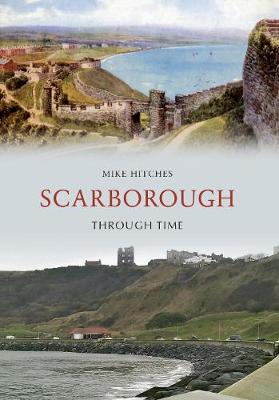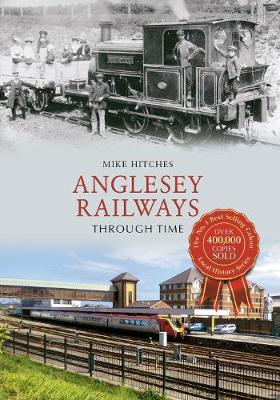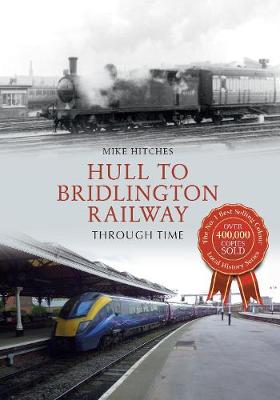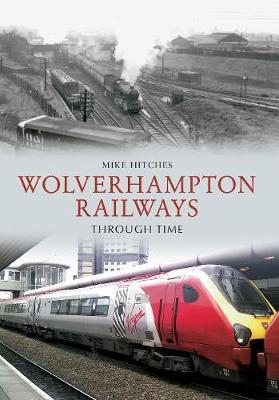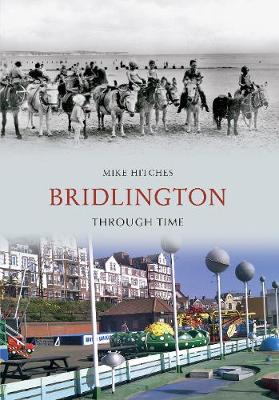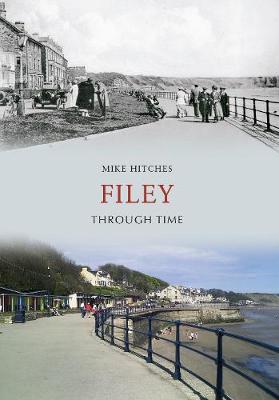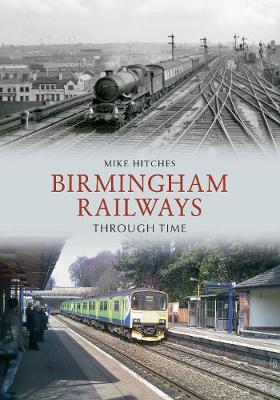Through Time
7 total works
Famous as a seaside holiday resort, Scarborough was believed to have been established by Norsemen around 966 ad, although the area had been attacked several times before the Norman Conquest. Indeed, a century later the King of Norway, Harold Hardrada, and his army waded ashore, burning and pillaging as they went, and totally destroyed Scarborough. The town did not even appear in the Domesday Book of 1086.South beach is the most commercialised, due to the proximity of the railway station, and the harbour also lies on this side. In its heyday, it was an important port for fishing boats that would discharge their cargos on the west pier, the oldest part of the harbour. This fascinating selction of images old and new will surprise and delight anyone who knows and loves Scarborough.
A railway arrived on Anglesey in 1848, linking London and Dublin. It was the great railway engineer Robert Stephenson who ensured that the railway link to Ireland would run along the North Wales coast to Holyhead when he presented plans that overcame the engineering challenges associated with the route. A branch was subsequently built from Gaerwen to Amlwch after the LNWR absorbed the CHR. This Anglesey Central Railway was first opened in around 1865 and completed in 1867. The LNWR won the contract to carry the Royal Mail by rail, but it was the City of Dublin Steam Packet Company that carried the mails across the Irish Sea. The LNWR did, however, build a magnificent inner harbour in the 1880s. The railway still runs from London to Holyhead and boats continue to sail from Holyhead to Ireland, but today only the Llanfair P.G., Valley (which serves the RAF base) and Holyhead stations remain.
The stretch of railway line between Hull and Bridlington forms part of northern England's historic Yorkshire Coast Line (or the Hull to Scarborough line), which runs from Hull Paragon to Bridlington and Scarborough and is around 55 miles long. Since it was opened by the York & North Midland Railway in the mid-1800s, the line and its many stations have maintained many of their original features and much of their charm.
Today, the line is operated by Northern Rail and there is much to see along the way - from the busy city of Hull to the Victorian seaside resort of Bridlington, including picturesque villages and pleasant market towns, as well as wonderful sea and countryside views. In Hull to Bridlington Railway Through Time, author Mike Hitches takes a journey along this historic route, showing the changes that have taken place over time and features that have remained the same.
Today, the line is operated by Northern Rail and there is much to see along the way - from the busy city of Hull to the Victorian seaside resort of Bridlington, including picturesque villages and pleasant market towns, as well as wonderful sea and countryside views. In Hull to Bridlington Railway Through Time, author Mike Hitches takes a journey along this historic route, showing the changes that have taken place over time and features that have remained the same.
From humble beginnings, Wolverhampton grew to become a significant railway town. Its success hinged upon its industrial might, which attracted several train companies to the town all hoping to profit from the area's trade and prosperity. The railways were the scene of bitter enmity, devious schemes and unlikely alliances, as rival companies fought to gain the upper hand. The legacy of this was two railway stations, numerous goods yards and the works at Stafford Road.In the twenty-first century, as Britain's heavy industry has declined, the railways are no longer central to the life of Wolverhampton as they once were. Many trains which still pass through the town, but they now carry tourists and business people rather than hauling coal. Wolverhampton Railways Through Time brings to life the intricate and fascinating story of the Black Country's rail network.
Bridlington has two stunning beaches of gleaming golden sands, with a picturesque, bustling harbour in the middle. The harbour is a hive of activity with fishing boats bringing in the day's catch, pleasure cruises along the heritage coast, speedboat rides across the bay and North Sea fishing expeditions on offer. Here you can also find a funfair, kids' corner and donkey rides, a museum, children's zoo, pitch and putt, putting green, craft units and tearooms. Mike Hitches takes a fascinating visual journey through the area, and also takes us back in time. If you head away from the beach into the Old Town, you will find a gem that has remained largely unchanged for centuries, where Olde Worlde pubs and antique shops rub shoulders with art galleries and tearooms. Why not follow this affectionate and fascinating historic tour, which will surprise and delight anyone who knows and loves the area.
The North Yorkshire seaside town of Filey started life as an important fishing village. Whole families were employed in the industry and the fish caught here were transported to Lancashire and beyond, first by horse and cart and later by train. The railway's arrival in North Yorkshire had a dramatic effect, as suddenly fish was available to the workingclass masses of the industrial towns and cities. By the late nineteenth century, 160 fish wagons were leaving Filey station daily.As tourists began to flock to the town to 'sea bathe' for their health, hotels sprang up on the seafront, hosting many wealthy and distinguished Victorian visitors, such as Charles Dickens, J. R. R. Tolkein, and even royalty! Tourism has remained the lifeblood of Filey ever since. In the 1950s, the heyday of seaside holidays, Filey and the nearby Butlins holiday camp attracted thousands of visitors every year and day trippers still flock to the town today.
The railway network within Birmingham has long been important for the movement of passengers and freight to serve the centre and its suburbs, and as the road network around Birmingham has become more congested, the railways in the city have, once more, taken on an important role. As the network declined in the twentieth century, trains were regarded as shabby and also suffered from poor punctuality and stations became unkempt and many had no staff, although the majority of the network remained intact. However, things began to change during the 1980s. Today, 'Cross-City' services operate from a number of Birmingham stations, and similar services function between Wolverhampton and Walsall, and other cities. The stations serving the city centre have very different and fascinating histories. New Street was the first to appear, built by the London & North Western Railway in 1854. The station at Snow Hill was built by the Great Western Railway and opened in 1852. Moor Street terminus was opened in 1909 close to the tunnel mouth on the Snow Hill line. The station was abandoned for a while but has since been beautifully restored to something near its former glory and now allows termination of Chiltern Railways' trains from London (Marylebone). Indeed, such renovations have ensured that Birmingham is still well served by a modern railway network.
